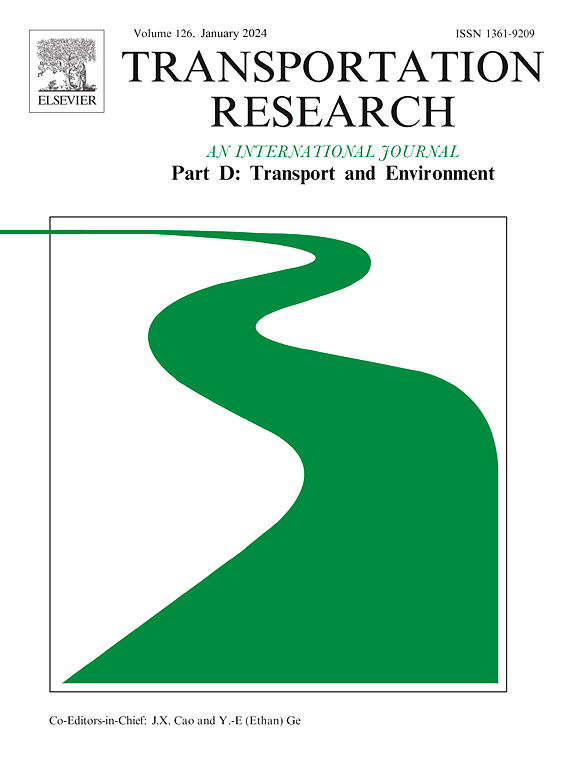Which matters to commuting-related CO2 emissions? Parking, population suburbanization, or employment decentralization?
IF 7.3
1区 工程技术
Q1 ENVIRONMENTAL STUDIES
Transportation Research Part D-transport and Environment
Pub Date : 2025-02-01
DOI:10.1016/j.trd.2024.104461
引用次数: 0
Abstract
Understanding the influences of built environment characteristics at residence and workplace on commuting-related CO2 emission (CCE) is important for achieving net zero carbon emissions from the urban planning perspective. Using 2019 travel survey data and parking survey data in Xi’an, China, this study applies gradient boosting decision trees (GBDT) to reveal the associations between the built environment and CCE. The results show that distance from workplace to CBD is the most important predictor, contributing 54% of the predictive power, and distance from home to CBD contributes 15%. The findings highlight the detrimental effect of population and job decentralization on CCE. Parking spaces at workplace and residence are more important to CCE than parking costs at the respective locations. However, their contributions to predicting CCE are limited once other built environment characteristics are controlled for. Therefore, omitting parking measures may not materially bias the relationships between the characteristics and CCE.
求助全文
约1分钟内获得全文
求助全文
来源期刊
CiteScore
14.40
自引率
9.20%
发文量
314
审稿时长
39 days
期刊介绍:
Transportation Research Part D: Transport and Environment focuses on original research exploring the environmental impacts of transportation, policy responses to these impacts, and their implications for transportation system design, planning, and management. The journal comprehensively covers the interaction between transportation and the environment, ranging from local effects on specific geographical areas to global implications such as natural resource depletion and atmospheric pollution.
We welcome research papers across all transportation modes, including maritime, air, and land transportation, assessing their environmental impacts broadly. Papers addressing both mobile aspects and transportation infrastructure are considered. The journal prioritizes empirical findings and policy responses of regulatory, planning, technical, or fiscal nature. Articles are policy-driven, accessible, and applicable to readers from diverse disciplines, emphasizing relevance and practicality. We encourage interdisciplinary submissions and welcome contributions from economically developing and advanced countries alike, reflecting our international orientation.

 求助内容:
求助内容: 应助结果提醒方式:
应助结果提醒方式:


